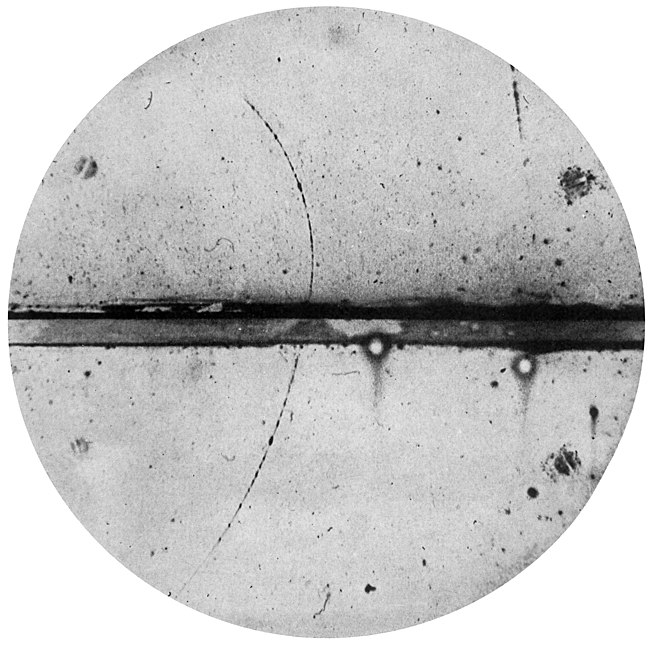
Main Difference
The main difference between Positron and Proton is that the Positron is a subatomic particle with positive charge and Proton is a nucleon (constituent of the nucleus of the atom) that has positive electric charge; symbol p.
-
Positron
The positron or antielectron is the antiparticle or the antimatter counterpart of the electron. The positron has an electric charge of +1 e, a spin of 1/2 (same as electron), and has the same mass as an electron. When a positron collides with an electron, annihilation occurs. If this collision occurs at low energies, it results in the production of two or more gamma ray photons (see electron–positron annihilation).
Positrons may be generated by positron emission radioactive decay (through weak interactions), or by pair production from a sufficiently energetic photon which is interacting with an atom in a material.
-
Proton
A proton is a subatomic particle, symbol p or p+, with a positive electric charge of +1e elementary charge and mass slightly less than that of a neutron. Protons and neutrons, each with masses of approximately one atomic mass unit, are collectively referred to as “nucleons”.
One or more protons are present in the nucleus of every atom; they are a necessary part of the nucleus. The number of protons in the nucleus is the defining property of an element, and is referred to as the atomic number (represented by the symbol Z). Since each element has a unique number of protons, each element has its own unique atomic number.
The word proton is Greek for “first”, and this name was given to the hydrogen nucleus by Ernest Rutherford in 1920. In previous years, Rutherford had discovered that the hydrogen nucleus (known to be the lightest nucleus) could be extracted from the nuclei of nitrogen by atomic collisions. Protons were therefore a candidate to be a fundamental particle, and hence a building block of nitrogen and all other heavier atomic nuclei.
In the modern Standard Model of particle physics, protons are hadrons, and like neutrons, the other nucleon (particles present in atomic nuclei), are composed of three quarks. Although protons were originally considered fundamental or elementary particles, they are now known to be composed of three valence quarks: two up quarks of charge +2/3 e and one down quark of charge –1/3 e. The rest masses of quarks contribute only about 1% of a proton’s mass, however. The remainder of a proton’s mass is due to quantum chromodynamics binding energy, which includes the kinetic energy of the quarks and the energy of the gluon fields that bind the quarks together. Because protons are not fundamental particles, they possess a physical size, though not a definite one; the root mean square charge radius of a proton is about 0.84–0.87 fm or 0.84×10−15 to 0.87×10−15 m.
At sufficiently low temperatures, free protons will bind to electrons. However, the character of such bound protons does not change, and they remain protons. A fast proton moving through matter will slow by interactions with electrons and nuclei, until it is captured by the electron cloud of an atom. The result is a protonated atom, which is a chemical compound of hydrogen. In vacuum, when free electrons are present, a sufficiently slow proton may pick up a single free electron, becoming a neutral hydrogen atom, which is chemically a free radical. Such “free hydrogen atoms” tend to react chemically with many other types of atoms at sufficiently low energies. When free hydrogen atoms react with each other, they form neutral hydrogen molecules (H2), which are the most common molecular component of molecular clouds in interstellar space.
-
Positron (noun)
The antimatter equivalent of an electron, having the same mass but a positive charge
“The notion of a positron weapon remains the stuff of science fiction.”
-
Proton (noun)
A positively charged subatomic particle forming part of the nucleus of an atom and determining the atomic number of an element, composed of two up quarks and a down quark.
